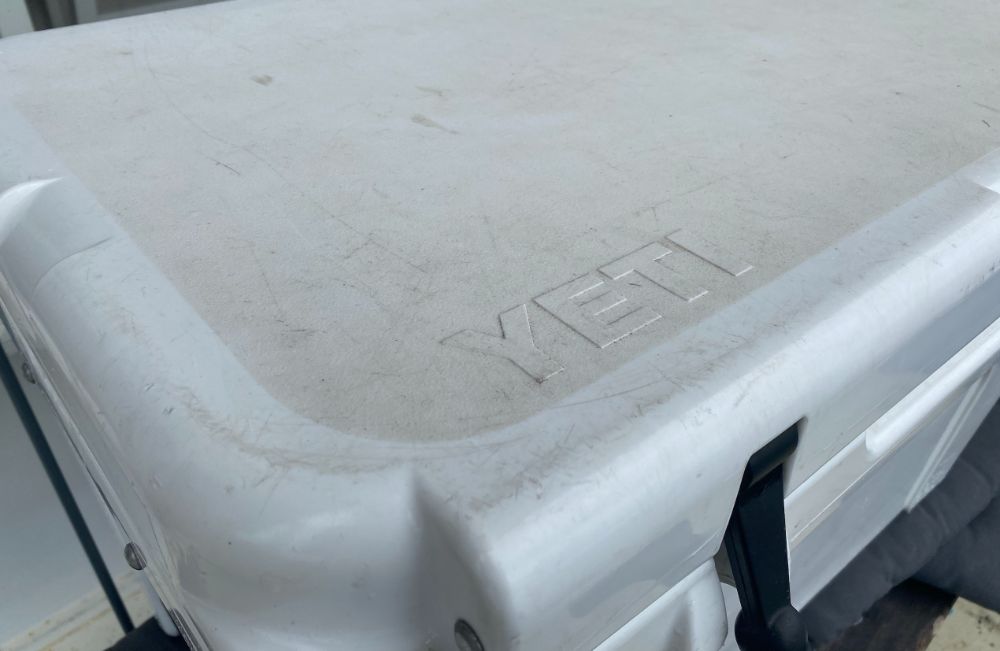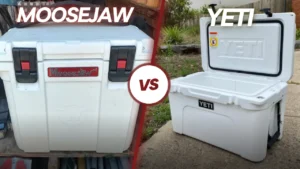Yeti coolers are a premium option for keeping drinks and food cold. White coolers are particularly useful as they naturally reflect the sunlight and keep things colder for longer.
Unfortunately, discoloration and stains tend to show up on white coolers more than colored coolers. But what about white Yeti coolers? Do they stain easily?
Well I've had my white Yeti cooler for over 7 years now and it's been on many camping trips and was even in a major car accident.
White yeti coolers are actually incredibly resilient and do not stain easily. When they do get scuffed up, you can clean them with hot water and soap, baking soda and vinegar or a high-pressure hose.
The most common areas to show stains are the lid of the cooler which is slightly textured and gets dirty quickly. However this can be cleaned. Other common forms of stains are scratches that accumulate dirt over time.
I'm Surprised At How Little Staining My White Yeti Cooler Has
I talk in detail about where Yeti coolers are likely to scratch the most and how easily they are scratched.
I'm actually amazed at how few scratches my Yeti cooler has after so many years of use (and abuse).
It's really only in these scratched areas that I noticed staining on my white cooler. Otherwise it tends to clean up pretty well.
The Lid Gets The Dirtiest

The lid tends to collect the most amount of stains compared to the rest of the cooler.
This is likely because it has a slightly textured surface which can more easily collect and hold dirt plus it's the spot I sit, stand and stack stuff on top of the cooler.
The Front and Sides Of The Cooler Are Relatively Stain Free
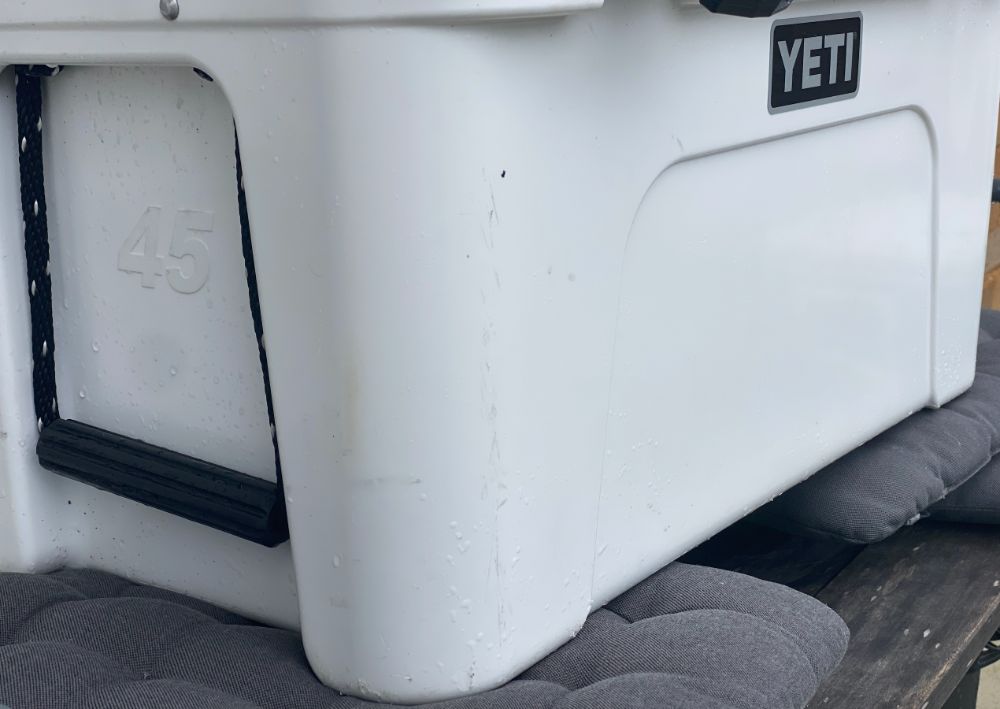
As you can see the front of the cooler is still extremely white and has a few stains and scratches on the corner but overall the cooler still looks really good.
The Base Of The Cooler Gets A Bit Scratched and Stained But It Isn't Too Bad
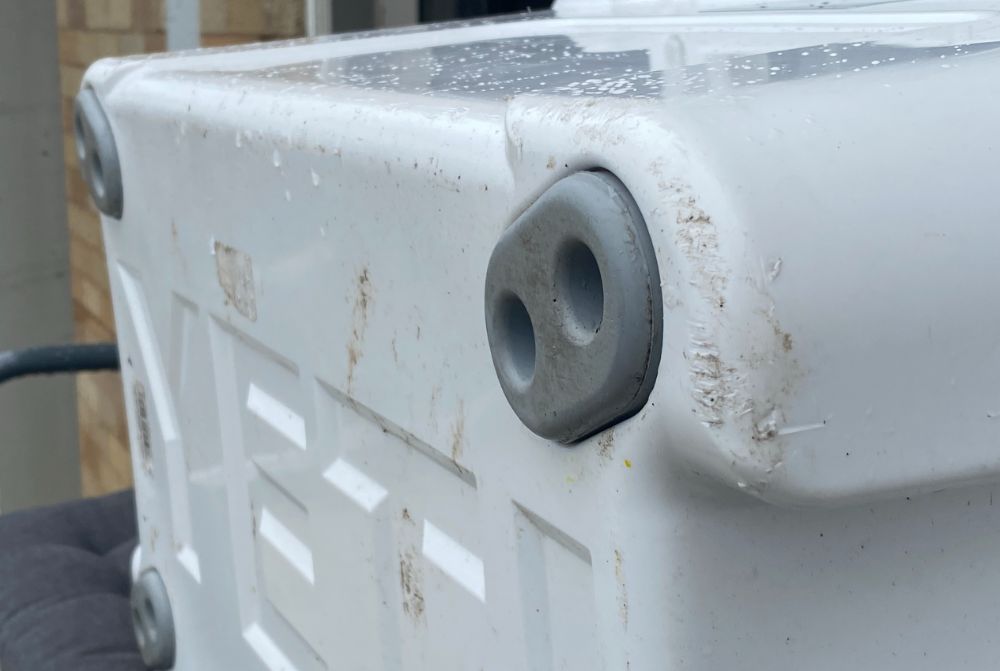
The base of my Yeti cooler has a few scuff marks and clearly shows some visible dirt – especially on the areas with the most scratches.
However, these aren't “stains” per say and are more dirt that's wedged it's way into the scratches.
I'm sure with a good scrub most of this would come off.
White Yeti Coolers Seem Immune To Yellowing From UV Exposure
I'm a surfer and one of the major problems with surfboards is that over time they turn from a beautiful white color into a disgusting yellow color that begins to resemble pee.
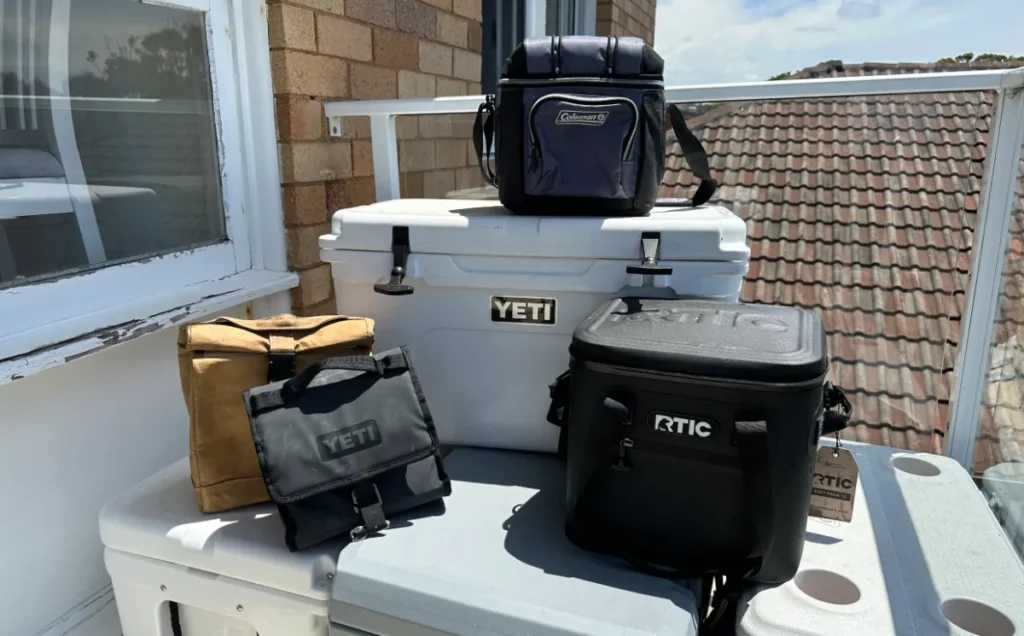
Because I live in a unit I personally store my Yeti and other hard coolers on my balcony.
I'm on the top floor and face the sun so my coolers receive A LOT of sunlight every single day.
It would be better if I stored them in the shade in my garage, but I use them a lot and carrying them up and down the stairs isn't fun.
But because of this my Yeti has received about 2 years worth of CONSTANT sun and UV exposure. Despite all this it's still extremely white and doesn't seem to have deteriorated from the UV rays and doesn't seem to have any noticeable yellow tinge to it.
If you were to store your Yeti properly (like I do when I put it in the garage) I'm sure it would last even longer. But 7 years in it's still going strong for me.
How to Remove White Cooler Stains
Here are some simple ways to keep your white yeti cooler clean, and stain-free.
There are several ways to remove white cooler stains, depending on the type of stain and your preference. Here are a few of the best ways to clean your white cooler.
Hot Water and Dish Soap
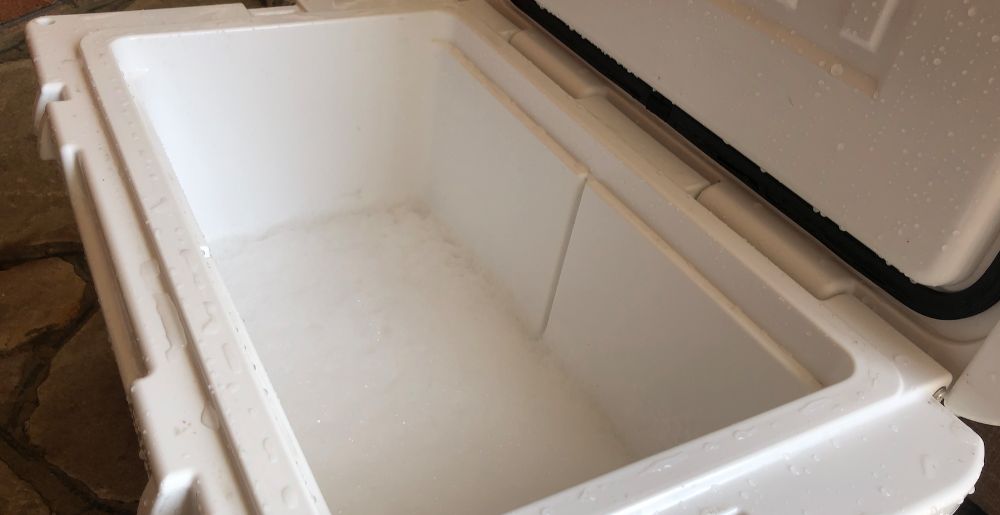
The easiest way to clean out your cooler is with hot water and dish soap. Let the mixture soak, then use a cloth to give it a good scrub. Rinse with clean water and dry upside down.
Vinegar and Baking Soda
Vinegar and baking soda create a natural astringent to bubble and remove deeper marks and debris without chemicals.
Sprinkle baking soda around your cooler, then pour in vinegar. Let it sit and do its work, then use a cloth to scrub.
Baking Soda and Dish Soap
Use baking soda and dish soap to make a paste for tough stains and tacky liquids or sauces.
Apply the paste, let it sit, and scrub away with a warm, wet cloth. Rinse with clean water and dry upside down.
Hot Water and Bleach
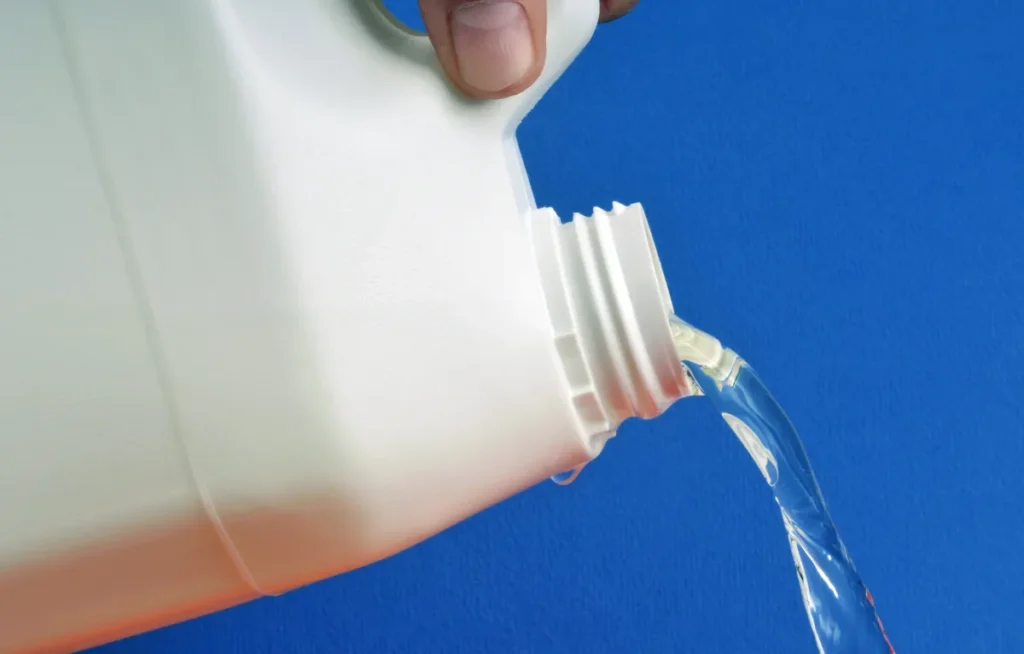
If your cooler has mold or mildew, use a ratio of 6:1 hot water to bleach to scrub your cooler.
Rinse with clean water and dry upside down.
Pressure Washer
If the exterior of your white cooler is scuffed up or dirty, you can use a pressure washer for a deep clean.
If you don't have a pressure washer, take it to a DIY car wash station.
I do this occasionally and it works great.
Be Proactive in Cooler Cleaning
Yeti coolers are known for their rugged durability. However, being proactive in caring for your cooler will help you get the best possible lifespan for your investment.
Use these strategies to keep your cooler stain-free.
How to Keep Your Yeti Cooler Clean
Your Yeti cooler is designed to hold up in messy environments. However, there are a few things you can proactively do to keep it clean and stain-free.
Wipe Up Spills
If you spill drinks or food inside your cooler or on the cover, wipe them up immediately.
Acting fast will prevent the stain from setting in so you don't have to scrub later on. This is especially important if syrupy or sugary liquid spills inside your cooler, as the ice will make it tacky and difficult to wipe.
Use a damp cloth or antibacterial wipe for basic spills. A bit of dish soap will help with bigger messes.
Pack and Store Carefully
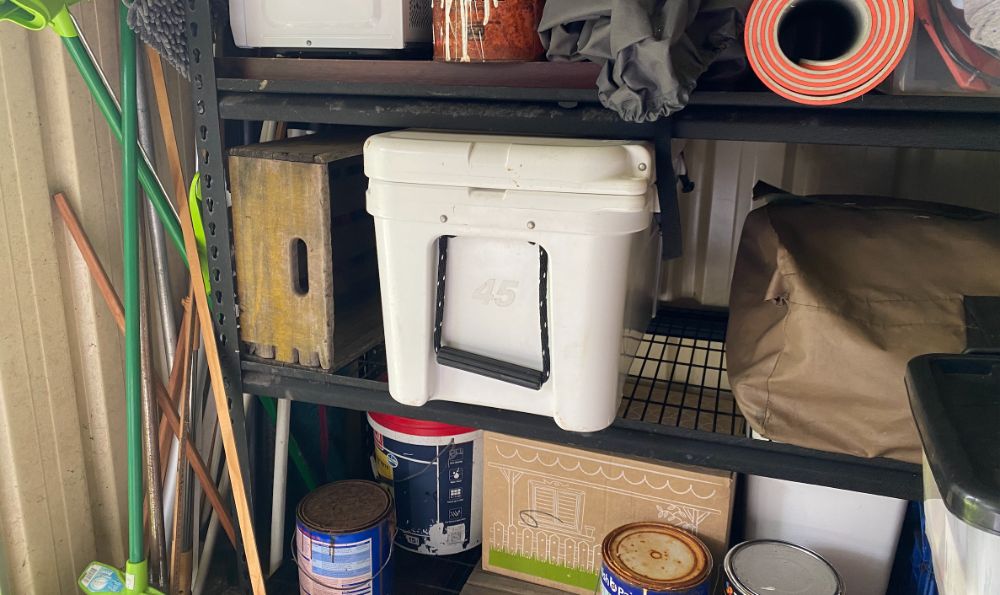
Yeti coolers are tough, but proper handling will extend their lifespan and prevent scratches and marks.
When you store your white Yeti cooler, avoid setting dirty or abrasive things on top of it. Place a towel or protective barrier over the top of your cooler when stacking other things on top.
Basically don't do what I do and leave your Yeti out in the sun 24/7. Above is a picture of how I used to store my Yeti on a shelf in my shed without anything else on top of it.
Strap your Yeti cooler down when transporting it to prevent it from sliding and banging into other things. Dirt and stains are harder to get out when the surface is damaged.
Dry Well (or Dry Upside Down)

When you rinse your cooler out, let it dry upside down to prevent mildew growth and lingering odors.
It's also beneficial to let your cooler sit out in the sun for a while to neutralize lingering bacteria. The sun will also help naturally bleach your cooler back to its pristine whiteness.

